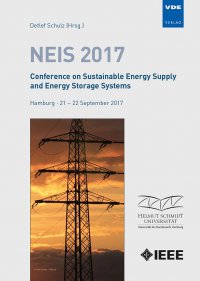Applying Synthetic Distribution Grids for Sensitivity Studies of Grid Expansion Reduction by Curtailment Schemes
Konferenz: NEIS 2017 - Conference on Sustainable Energy Supply and Energy Storage Systems
21.09.2017 - 22.09.2017 in Hamburg, Deutschland
Tagungsband: NEIS 2017
Seiten: 6Sprache: EnglischTyp: PDF
Persönliche VDE-Mitglieder erhalten auf diesen Artikel 10% Rabatt
Autoren:
Kellermann, Jan; Larscheid, Patrick; Moser, Albert (Institute of Power Systems and Power Economics (IAEW) of RWTH Aachen University, Aachen, Germany)
Inhalt:
One approach to limit the expansion needs in distribution grids caused by an increasing number of connected distributed renewable energy sources is the application of curtailment schemes. To quantify the holistic effects of curtailment schemes on expansion needs, the heterogeneity of medium- and low-voltage distribution systems has to be considered. The use of synthetic distribution grid models combined with Monte Carlo simulations is one approach to assess this heterogeneity. In this paper, a method for conducting sensitivity analyses to quantify the efficiency of curtailment schemes regarding different parameters using synthetic grid models is presented. Simulations examining the convergence behaviour of the stochastic model are conducted. Based on the results, sensitivity analyses are performed by varying model parameters such as cable types and average distances between stations. The results support the thesis that curtailment significantly reduces grid expansion needs. Furthermore the results reveal a large spread in expansion costs derived for similar supply tasks in terms of total connected capacity and similar structure parameters. The sensitivity analyses show a large impact of cable types and distances between stations on the total expansion costs. However, the impact on the relative cost reduction through curtailment varies between the modified parameters. While the cable type does not have a significant impact, the curtailment seems to be more effective for smaller average station distances.


